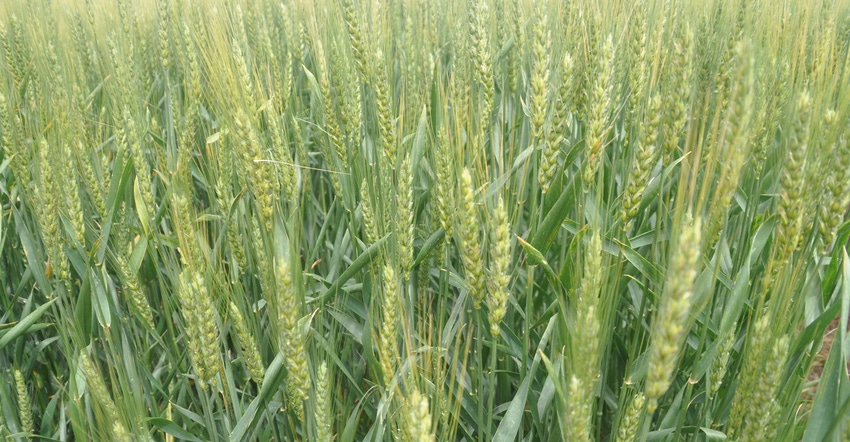
The Illinois wheat crop continues a wild ride this growing season. “All bets are off at this point,” says Terry Wyciskalla, an independent agronomist from Nashville. “We may have good wheat; we may have terrible wheat — we don’t know.”
The wheat crop is running at least 10 to 14 days ahead of normal, says Fred Kolb, a wheat genetics professor at the University of Illinois, and it’s too early in the turbulent growing season to project yields.
A late fall and favorable growing conditions gave the crop a head start. Fast-forward to a record-breaking February, with an average temperature of 40.5 degrees F, according to the Illinois State Water Survey, followed by rain and snow in March.
“February and March weather flipped,” Kolb notes. “The wheat crop broke dormancy early.”
Or did it? The winter was so mild, Wyciskalla believes wheat never went completely dormant in southern Illinois. Microbial activity stayed active in the unfrozen soils, he adds, releasing a bit more nitrogen from mineralization than usual in southern Illinois. Timely January, February and March N applications set the crop up for a fully loaded spring. “We might have more nitrogen out there than we’re used to,” Wyciskalla explains.
The running start wasn’t enough to push the Illinois wheat crop too far before the March temperature drop. “The stems hadn’t elongated yet, and wheat heads were close to the ground,” Wyciskalla says.
Kansas wheat farmers weren’t as lucky; most of their wheat acres were well into heading and jointing when a late April snowstorm hit.
“We dodged the bullet,” Kolb says. “The wheat looks good, maybe bigger than optimal.”
Favorable weather conditions and adequate nutrients had produced lush wheat plants with heavy heads.
Then it rained.
Eight inches of rain in early May across much of southern Illinois brought the hearty wheat crop down. Just as the crop recovered, 2 more inches of rain took it down again. Wyciskalla is confident that most of the crop will bounce back from the second hit.
“As long as it’s not on the ground and the stem isn’t bent, it will be OK,” he says. “It’s like breaking a limb on a small tree; you’ve influenced how nutrients flow. Once you bend the stem, you are blocking nutrients and water from flowing to the head to fill the grain.”
The location of the bend matters, too. A bend below the flag leaf, where energy for the head is produced, cuts off nutrients and dramatically impacts yield. “Anytime the stem is influenced, yield is impacted,” he explains.
Another threat
There’s another potential yield robber: disease. It’s too soon to tell if fungicide treatments applied prior to the rain will last, Wyciskalla says. So far, reports on last year’s top disease nemesis, stripe rust, have been minimal.
“Stripe rust was the disease of the year last season,” Kolb notes.
Scab, or fusarium head blight, is the biggest threat to wheat. “This year, with this weather, really illustrates why it’s important to start with a resistant variety,” Kolb says. If the weather hinders fungicide applications, the wheat still has one level of protection.
There is one disease that is already appearing in fields, Wyciskalla notes. The overly active southerly winds this winter ushered in plenty of aphids to infect wheat with barley yellow dwarf disease.
“It’s not the kind of disease that will devastate the crop, but it still may lower yield from what was there,” Kolb explains.
Wyciskalla says the next week to 10 days will reveal whether or not fungicides survived the rain and will protect the wheat.
“It has the potential to be a good crop,” he says. “It’s just a little too early to tell.”
Heads up for double-crop beans
Watch for vole damage in wheat, cautions Wyciskalla, after discovering varying degrees of damage in early May while scouting.
“I noticed bleached wheat heads caused by voles chewing off the plant at the soil surface, and other areas had all of the plants chewed off in spots half the size of a pickup bed,” he explains. “There is nothing that can be done at this point, and it may carry over into the double-crop soybeans.”
About the Author(s)
You May Also Like




